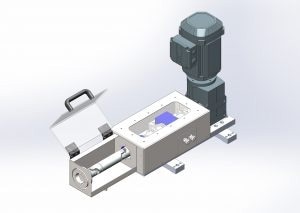The aerospace sector is well known for its safety standards and the entire sector has progressed to offer services and equipment for testing aircraft and their subsystems.
As the airliners take off and land, they are subjected to huge loads from the undercarriage touchdown to the back-thrust of the jet engines when they slow the aircraft on the runway and the wind pressure on the flaps and flight control surfaces when they are lowered to enable air-braking. Moreover, it is necessary to frequently test the relevant parts and recertify them as fit for purpose, as these loads can increase rapidly in an emergency or during difficult situations.
Test Rigs from SGN Electrical
Recently, SGN Electrical in Sittingbourne, Kent developed two test rigs — one for testing the flaps on the tailplane and the other for testing the landing gear, that helps ensure that the transoceanic-scale airliners are capable of carrying hundreds of passengers and can land every flight reliably and safely.

SGN is renowned for its electrical contracting services to the majority of industries in the southeast, including at the main airports of the region where “right first time and right on time” is the expected standard regardless of the work challenges. The engineers at the company are highly experienced in testing and inspection, from small installations to aerospace field, hazardous areas, and other specialized fields. In addition to electrical expertise, they are equally knowledgeable in mechanical engineering; therefore it was a choice by nature to develop the test rigs.
Testing of Ballscrews and Landing Gear Using Test Rigs
One rig performs the testing of the ballscrews used for raising and lowering the flaps of the tailplane. Instead of carrying out merely a function test, the rig simulates the high-speed airflow over the aircraft while it is in flight by employing a hydraulic actuator to exert a measured but changing load to the ballscrews.
The second rig tests the landing gear through the simulation of loads on the main lead screw as the wheels are lowered and touch down. This includes the sudden shock loads that might surface during an emergency landing and the additional loads that could possibly be experienced during bad weather conditions.
Sensor Technology’s TorqSense Transducer
The TorqSense transducer developed by Sensor Technology Ltd in Banbury is used as the main element in both the test rigs. As the TorqSense is a non-contact technology that measures the torque in a rotating shaft using reflected radio waves, it is much-favored by test rig builders.
There is no need to spend time setting up fiddly slip rings every time you use the rig. You just point the sensing head at the test piece and real-time data is collected. We run this through a standard Sensor Technology controller and the results are both displayed on a digital screen and stored for later analysis.
Scott Nicholson, SGN Electrical
During operation, two piezoelectric combs are attached to the test shaft at right angles to each other. Their function is to reflect back radio waves targeted at the shaft by the TorqSense; however, since they get distorted proportional to the torque in the shaft (one expanding, and the other compressing), they, in turn, distort the reflected waves. The extent to which the waves get distorted is in proportion to the comb distortion, which reflects the shaft deformation and therefore the level of torque that it undergoes.
Using TorqSense makes it easy to build a test rig, but far more importantly it makes the tests much, much quicker and easier. Therefore more tests can be done in a given time, which means results can be checked, double-checked and checked again—which is pretty much the operating procedure required for aircraft safety.
Scott Nicholson, SGN Electrical

This information has been sourced, reviewed and adapted from materials provided by Sensor Technology.
For more information on this source, please visit Sensor Technology.